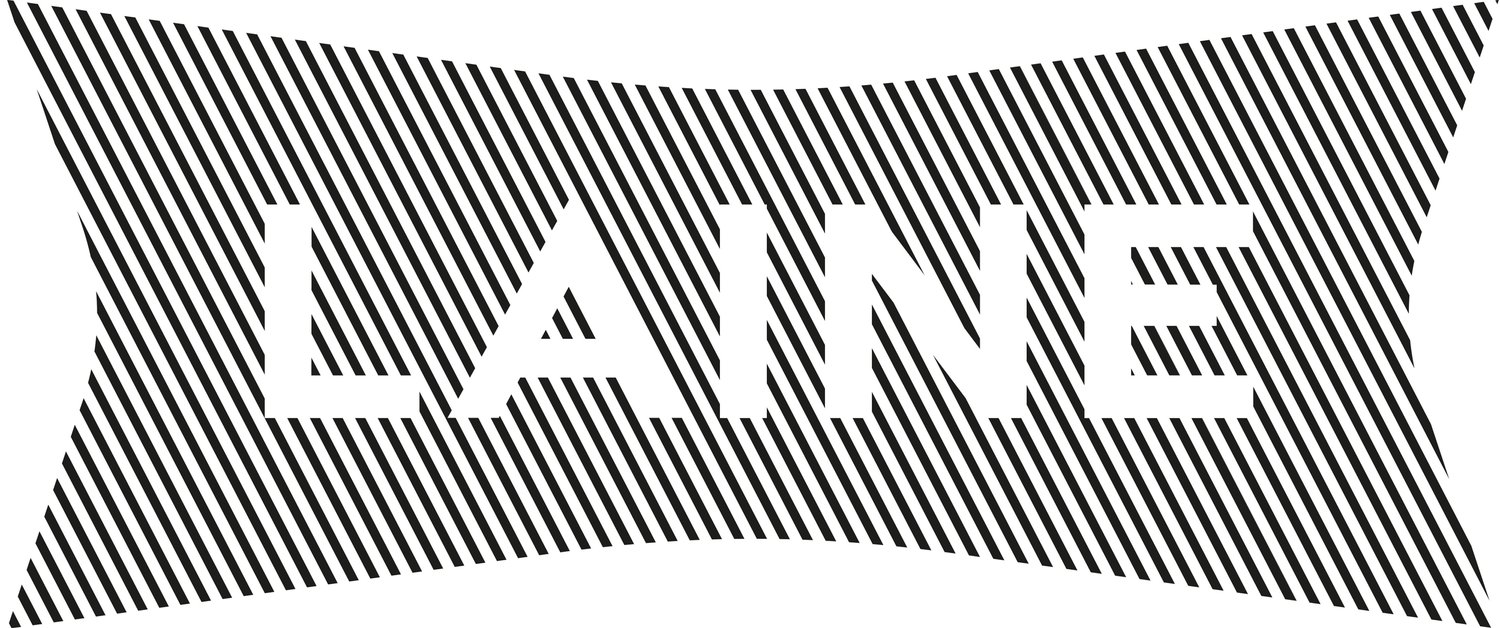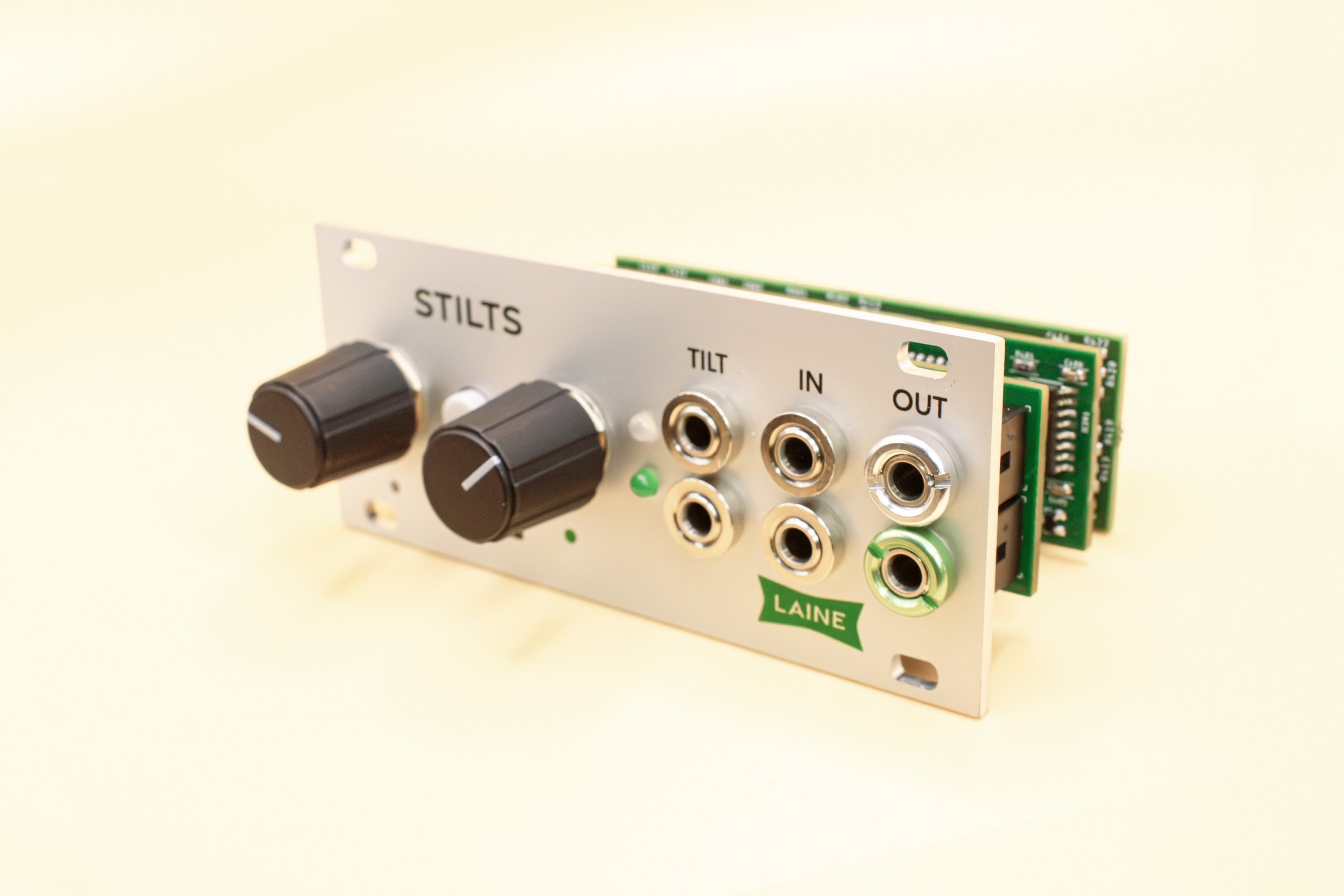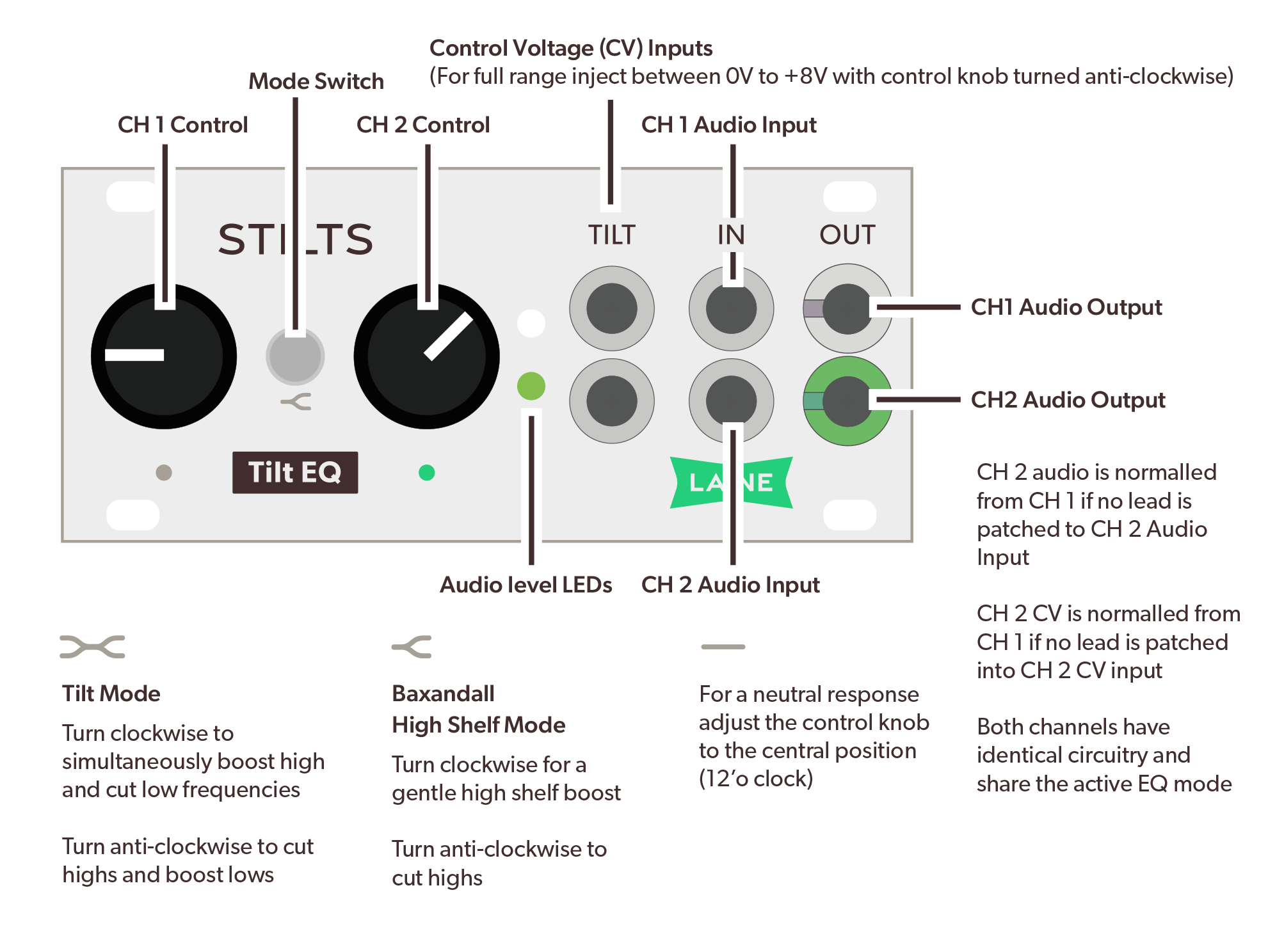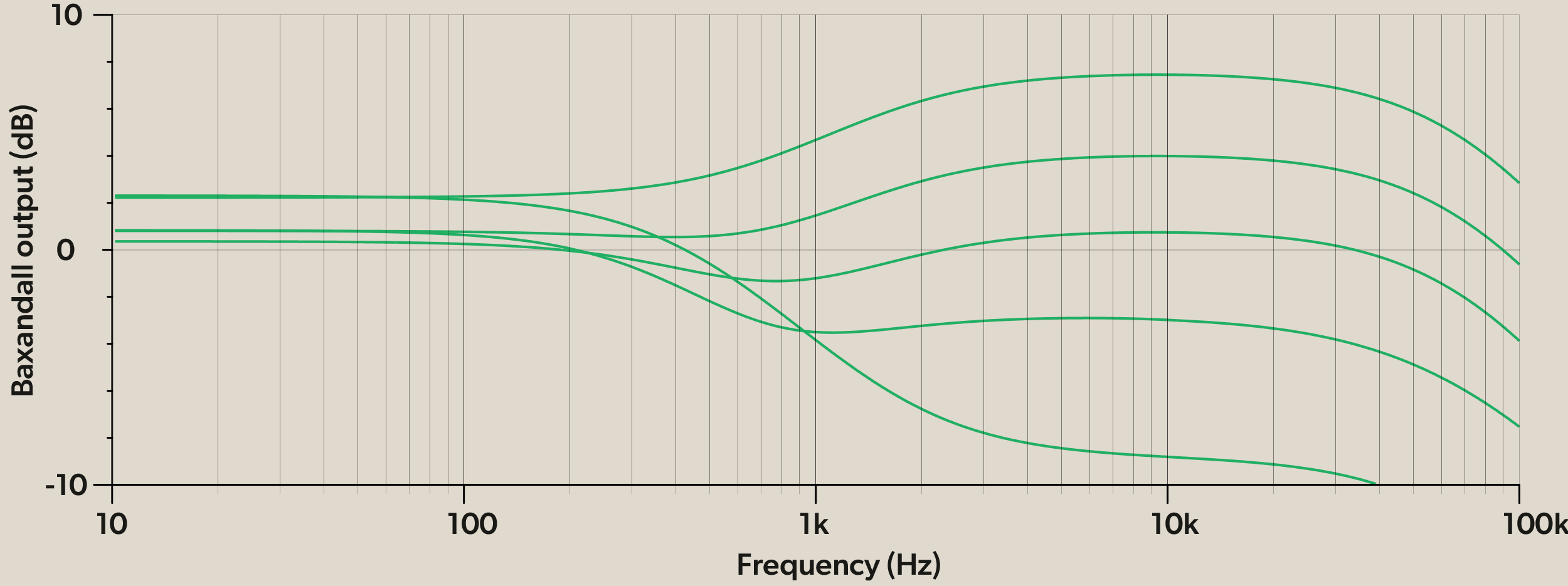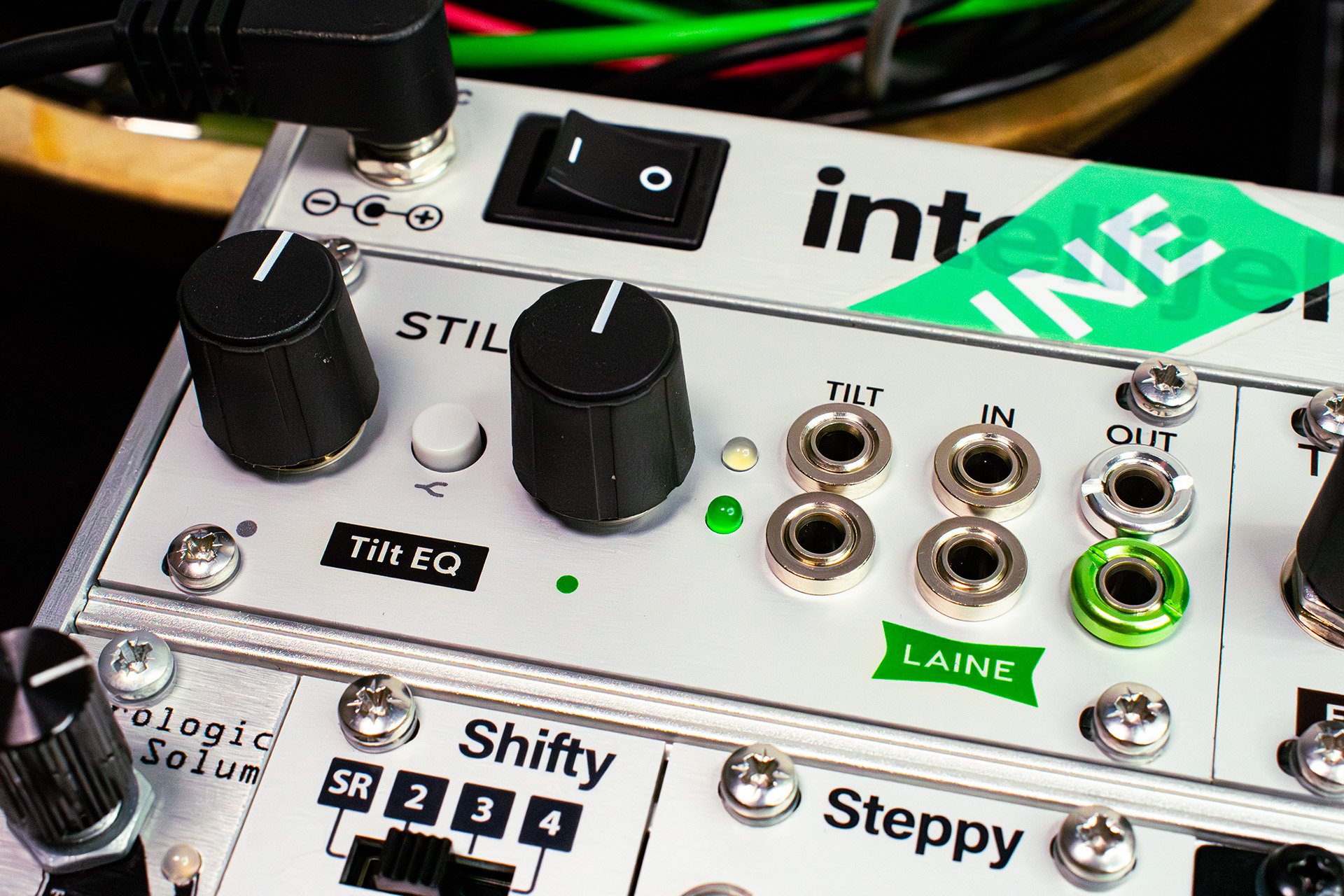Perform a variety of mixing and sound design duties ranging from subtle brightness and clarity adjustments to low-end rumble removal, boosted low-pass filtering and sweep EQ.
In the default tilt mode, turning the control knob clockwise simultaneously boosts treble and cuts bass. Turning anti-clockwise boosts bass and cuts treble. These boosts and cuts are pivoted around the mid-range. With the control knob at 12 o’clock the frequency response is neutral.
With Baxandall high-shelf mode enabled, turning the control knob clockwise past 12 o’clock introduces and gentle high-shelf EQ weighted around the upper mid-range. Turning the control knob anti-clockwise results in a wide high-shelf cut with subtle bass and mid-range adjustments.
Patching the channels in series allows for radical sound shaping and band-pass responses. Each channel provides up to +/- 8db of low and high-frequency gain control, summing into a low noise output stage. Hot input signals over 15vpp are saturated by active Zener diode clipping.
*TILT is a Registered Trademark of PMI Audio Group
Features
• Precise voltage control of EQ tilt and shelf
• Seamless switching between EQ modes
• High-quality components used throughout
Specifications and downloads
• Intellijel 1U format
• Width 18HP
• Depth 32mm
• Power requirements ~60mA +12V/~58mA -12V
• Control voltage range 0-8V
• Impedance Input 100K / Output 1K
User Interface
Typical Response Graphs
Audio demos
The signal journey for the demos is listed below. They were recorded with a Focusrite Scarlett 18i8 at 24bit resolution, 44,100 Sample rate. All filter and EQ type modulation you hear is performed by the Stilts hardware. No audio sweetening, compression, or other post-processing has been applied after capture. To prepare for streaming, the audio files were dithered to 16bit and encoded to 320 MP3 in Winlame. (Note that Stilts is a fully analog module with an incredibly low noise floor. Any digital artifacts highlighted by the filtering are from the source.)
Drums: Squarp Rample mix out with ~14v peak to peak signal > Stilts > Intellijel case line out
Ambient: 2HP pluck + MFX reverb > Stilts > Intellijel case line out
Oscillator: Klavis Twin Waves > Stilts > MFX reverb > Intellijel case line out
Various breakbeats played from Rample, summed and fed into a single channel of Stilts, first with a neutral response then tilted high and low
Here the channels are patched in series, allowing for more dramatic filtering
In this example, the channels are not always tilted in unison, adding subtle movement to the EQ responses
Baxandall high-shelf mode uses a seperate topology to the tilt EQs and has a much more subtle effect on source material. In this mode bass frequencies are not filtered, instead a wide high shelf curve boosts or cuts the high-midrange and above.
Due to the SSI VCA based design, Stilts has an excellent linear response to control voltage. Here two channels patched in series are fed a modulating LFO signal.
Here an oscillator from Klavis Twin waves is first patched through two channels of stilts before being sent to a hall reverb in ALM MFX. Notice how the filtered tone of the sends can be used add character to the reverb effect.
